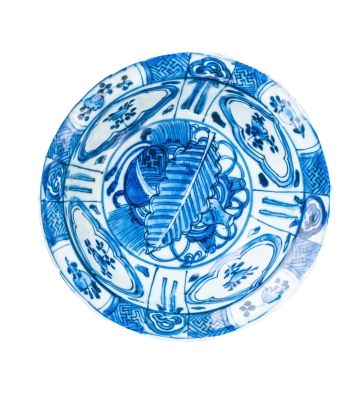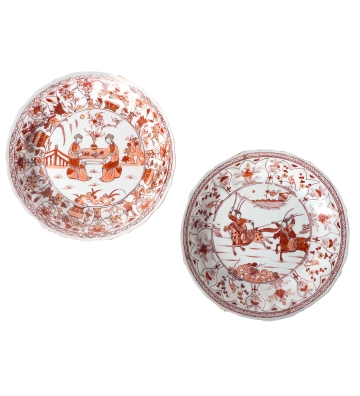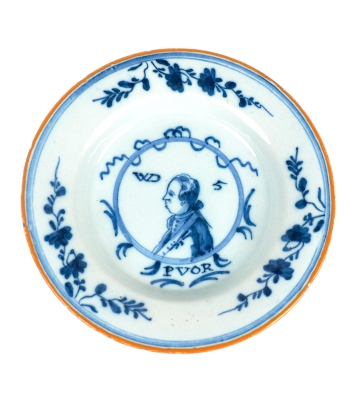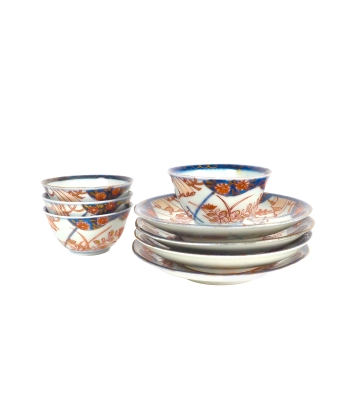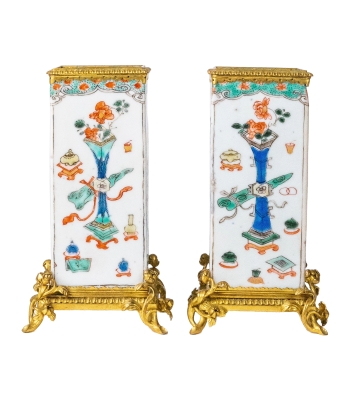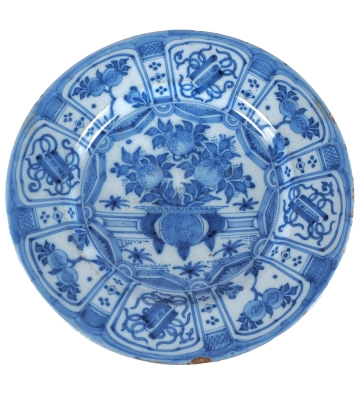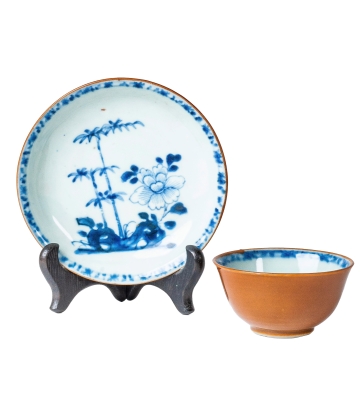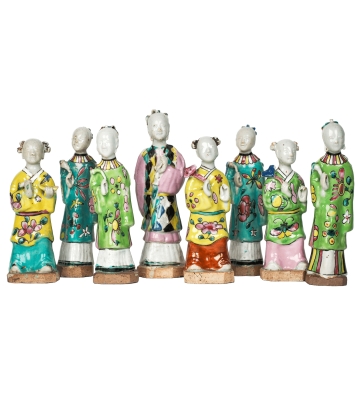This Wanli bowl is also known as ‘klapmuts’ or ‘clapmuts’. This nickname was given by the Dutch East India Company clerks because it looked like a Dutch head gear with an overturn rim made with fur and dated to the 16th century. The rim could be pulled down against the wind and cold. The center is this bowl is decorated with a few of the Chinese symbolical items called ‘Hundred Treasures’. We can see the famous artemisia leaf, scrolls, and a tassel. The cavetto is divided in four panels with flowers in it. In the smaller parts on the border, we can find the ruyi symbol. The border is also filled with the Swastika mystic symbol.
The word ruyi itself comes from the two characters rú (如) and yì (意), and together they literally mean “as you wish.” On the first glaze it looks like the Lingzhi (fungi) symbol, but is has another meaning. The symbol depicts the upper rounded part of the ruyi scepter: a Chinese ceremonial attribute and a sign of authority. According to superstition, the ruyi brings its owner good luck, blessings, and a long life.
__________________________________________________________________________________________
Kraak porcelain (1570-1650); its popularity and name.
"Kraak ware”, a style of Chinese porcelain, was primarily produced during the Ming Dynasty (1368-1644) under emperors Wanli, Tianqi, and Chongzhen. The typical and most Kraak wares are produced in the Wanli period (1572–1620). It was under his reign that the export of “European taste’’ Chinese porcelain made a massive flight.
In the early 17th century, the Dutch East India Company intercepted often Portuguese ships carrying a significant amount of this porcelain in their cargo’s. The loots with mainly porcelain, raw silk, spices and gold were auctioned in the Netherlands (Middelburg), leading to substantial profits and increased European interest in Chinese goods more and more. Taking over of Portuguese and Spanish ships was for the Dutch very lucrative and permitted by their government because of the long-lasting war with the Spanish. Especially for porcelain it was very useful: The Dutch East India Company did not have a profitable direct access to China until their settlement in Canton in 1723. The Dutch purchased porcelain on the markets elsewhere in Asia or via the junk trading routs undertaken by Chinese citizens.
A famous early example is the Carrack Santa Catarina. The Santa Catarina was a Portuguese ship that had been seized by Admiral Jacob van Heemskerk in the Singapore Strait (between the Malacca Strait and the South China Sea) on February 25, 1603. Her cargo contained 60 tons of Kraak porcelain.
Chinese porcelain of this type was already known in the Netherlands before 1600, because of the regular trade with Portugal and the sailings of the so-called advance companies to Asia. We have to keep in mind that the Dutch East India Company was established in 1602, when the kilns of the Wanli era were already producing for 30 years.
The exact origin of the name Kraak remains debated. Most likely it is derived from the ship large and round Portuguese ships called 'Carrack'. The word was not applied to porcelain by the Dutch East India Company but only to the Portuguese ships, whilst the Portuguese used the word ‘nau’ for their own type ships and not ‘Carrack’. An other explanation for naming this type of porcelain Kraak ware is that it might be derived from the Dutch word 'kraken’, meaning ‘to break’ referring to the fragility. The word Kraak porcelain was first used around 1638.
Source: C.A. Jörg "De porseleinhandel van de VOC in de 17e en 18e eeuw", 2023.
T. Brook "Trading places: the Santa Catarina brought the first large shipment of porcelain from the Far East to Europe, creating a demand for new luxury goods, which feature in paintings of the Dutch Golden Age", 2015.
E. Mantyk and N. Stevanovic "The Ruyi: More Than Just a Pattern”

